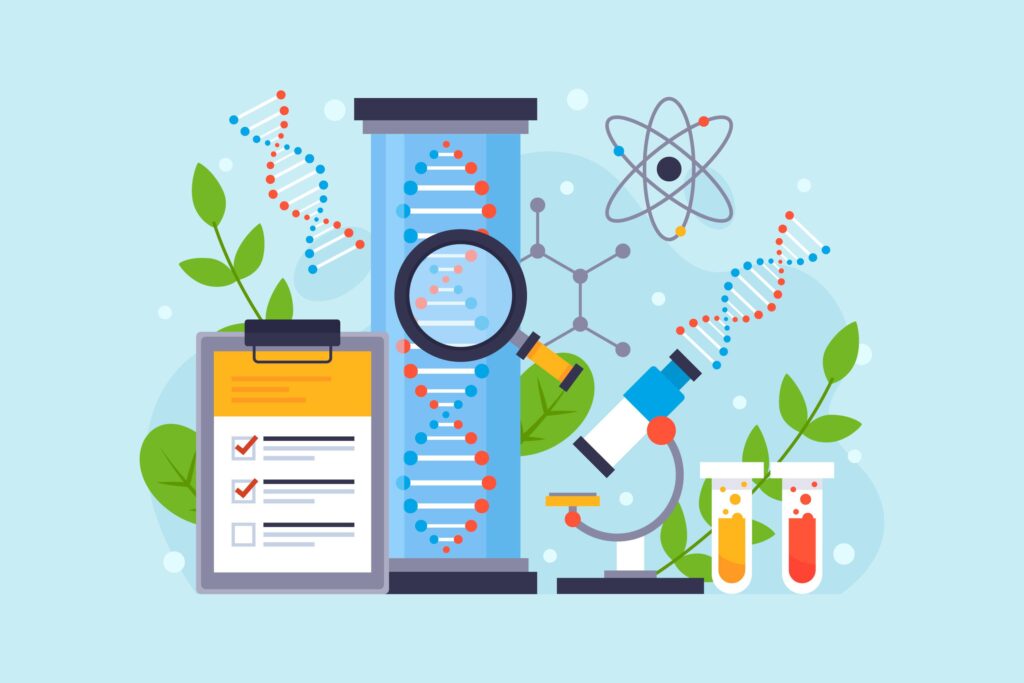Since the earliest agricultural settlements, people have been utilizing biological processes to enhance their quality of life. Humans first used microorganisms’ biological processes to manufacture bread, alcoholic beverages, cheese, and preserve dairy goods some 6,000 years ago. However today’s definition of biotechnology, which was originally used to refer to the molecular and cellular technologies that started to develop in the 1960s and 1970s. The term biotechnology was used for the first time by Karl Erkey, a Hungarian Engineer, in 1919.
Timeline of Biotechnology in last 100 years
Over the last 100 hundred years or so, biotechnology emerged with the following discoveries and advancements:
1919. Hungarian scientist Karl Ereky coins the term biotechnology.
1928. Alexander Fleming discovers penicillin, the first true antibiotic.
1943. Oswald Avery proves DNA carries genetic information.
1953. James Watson and Francis Crick discover the double helix structure of DNA.
1960s. Insulin is synthesized to fight diabetes, and vaccines for measles, mumps and rubella are developed.
1969. The first synthesis of an enzyme in vitro, or outside the body, is conducted.
1973. Herbert Boyer and Stanley Cohen develop genetic engineering with the first insertion of DNA from one bacteria into another.
1980s. The first biotech drugs to treat cancer are developed.
1890. The United States Supreme Court rules that a “live human-made microorganism is patentable subject matter,” meaning GMOs can be intellectual property.
1982. A biotech-developed form of insulin becomes the first genetically engineered product approved by the U.S. Food and Drug Administration (FDA).
1983. The first genetically modified plant is introduced.
1993. GMOs are introduced into agriculture with the FDA approval of growth hormones that produce more milk in cows.
1997. The first mammal is cloned.
1998. The first draft of the Human Genome Project is created, giving scientists access to over 30,000 human genes and facilitating research on treatment of diseases such as cancer and Alzheimer’s.
2010. The first synthetic cell is created.
2013. The first bionic eye is created.
2020. mRNA vaccine and monoclonal antibody technology is used to treat the SARS-CoV-2 virus.
Biotechnology is the application of biology to the problem-solving and product-making processes. There are various different applications of biotechnology in industries like Food, Pharma, agriculture and allied fields.

There are many uses for biotechnology, especially in agriculture and medicine. Examples include the application of stem cell research and cloning to replace deficient or dead cells and tissues, as well as the use of biotechnology to combine biological information with computer technology (bioinformatics), investigate the use of tiny instruments that can enter the human body (nanotechnology), and more such as regenerative medicine. Nowadays various biotechnological tools and techniques are used to formulate and discover new potential drugs from natural sources like plants.
Types of Biotechnology
There are various types of biotechnology and can be classified as below. I have compiled a short brief description of each type.
- Red biotechnology: Red biotechnology is a distinct branch of biotechnology that deals with the therapeutic and pharmaceutical application of biotechnology.
- Green biotechnology: Green biotechnology is concerned with using ecologically friendly methods in place of conventional methods for farming, horticulture, and animal breeding. One illustration is the creation of transgenic plants that have been altered to have better flavour, more resilience to pests and diseases, or to thrive better in unfavorable climates. Sometimes it is also termed as agriculture Biotechnology.
- White biotechnology: Uses of enzyme or microorganism in various industries for the production of chemicals, pharmaceuticals, food ingredients, energy, paper and biofuels from renewable resources.
- Yellow biotechnology: Also known as insect Biotechnology, ‘Yellow biotechnology’ refers to biotechnology with insects — analogous to the green (plants) and red (animals) biotechnology. Active ingredients or genes in insects are characterized and used for research or application in agriculture and medicine
- Blue biotechnology: This exploits marine resources to obtain aquaculture, cosmetics and health care products. In addition, it is the branch most widely used to obtain bio-fuels from certain micro algae. It encompasses processes in marine and aquatic environments, such as converting aquatic biomass into fuels and pharmaceuticals .
- Grey biotechnology: Its purpose is the conservation and restoration of contaminated natural ecosystems through, as mentioned above, bioremediation processes.
- Gold biotechnology: Also known as bioinformatics, it is responsible for obtaining, storing, analyzing and separating biological information, especially that related to DNA and amino acid sequences.
Biotechnology, despite of having many applications in almost every sector is less discussed and explored in India. We need a better, stronger and a reliable formation of Bio community to make Biotechnology useful in development of new useful products for mankind. We make new patents, copyrights but they are of no use until we can use the process, product for the mankind.
In India Biotechnology have scope for much more development and studying Biotechnology can make you capable to start your career in industries like Pharma, Bio pharma, Food, Agriculture, IPR and much more.
